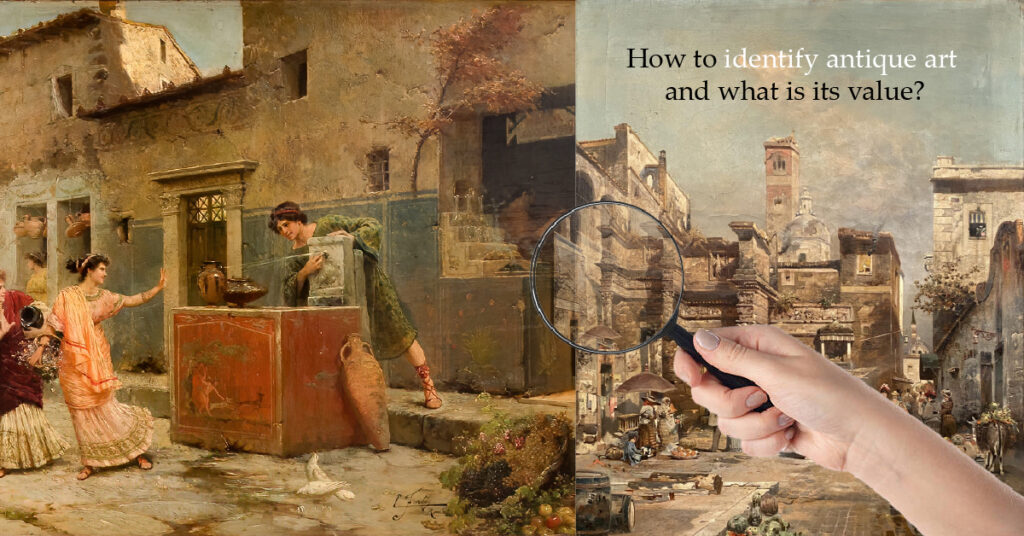How to identify antique art and what is its value?
- Posted on 23rd December 2022
- in Antique Art Buyers
- by Antique Art Buyers
Hello art lovers…More of us possess beautiful paintings from long ago that are many years old. Some of these valuables are hung in the living room, bedroom, or are collected as a hobby to sell.
Today, I’ve gathered the most frequently asked questions by people who require a clear answer. So, to help you out, I’ve written this helpful guide to give you a better understanding of ancient paintings. Art collectors from around the world are proficient in finding the real old pieces, but if you’re a beginner and need to know the answer, then this article is for you.

Moreover, the identification of old artworks requires some steps. So, let’s start…
3 steps to recognizing the originality of antique paintings
An antique painting is more than 100 years old and was painted in different incredible styles. These oldest masterpieces are still admired and sought after. Many different styles including impressionism, abstract, surrealism, pop, & many other with different painting medium like oil, acrylic, water color meant to showcase the most beautiful creation.
Note: You can identify if the painting is antique or not just by looking at its back side.
Following are the 3 steps to identify a really fine old piece:
1. Look for the signature.
The first and most basic step is to search for an artist’s signature. A signature of an artist will be signed on the fine painting’s back below. Many famous painters in the 15th century used to showcase their artwork with their signature on it. However, the signature also indicates whether the painting is original or a reproduction. A signature can easily reveal the era of the artwork.
We are fine art appraisers who can easily tell by looking at the signature and other things below whether your fine art is more than 100 years old or not. You can contact us to get an honest appraisal anytime and from anywhere.
2. The origin of an artwork can be determined by its material.
Artists began switching from wooden to canvas in the 15th and 16th centuries because it provided them with more space to paint. The canvas consists of the name of the material supplier and its location. This will make it easier for you to identify the artist who created the painting. Furthermore, the material tells half of the story of the painting without much effort.
3. The label on the antique artwork helps to narrow down the provenance.
The canvas gets attached with a label, on which the following things are written or mentioned: artist name, date, inventory number, artwork title, and provenance. Now it has become easier to know the history of an ancient artwork with these labels and marks on back side of canvas. Furthermore, the painting’s inventory number reveals its auction history.
Fine art appraisers and specialists with extensive experience can easily identify such details that tell the entire story of the painting. With this vital information, they can also quote the correct price.
In a nutshell,
To note down more important details, I’ve mentioned few things. If you want to check the condition of the painting to see whether it has undergone any repairs or not, examine the canvas layer; it should appear that an extra layering was done on the torn or hole in the painting to stabilize the original artwork.
What is the current market value of an antique painting?
After all, it all depends on the history, origin, rarity, and condition of the piece. The more perfection and rarity there is, the more opportunities to own top dollar. However, in 2021, the global market for painting was 65.1 billion US dollars. And, with 2022 yet to be analyzed, let’s see what the score is.
Wrapping up!
If you’re seeking an art dealer near me, you can get in touch with us anytime to get your old painting appraised and know the complete details of whether your auction-owned painting is ancient or not. Furthermore, we also offer a sky-high price for the precious metal.
For now, I’m closing the door, and soon I will open it to provide you all with more interesting discoveries.



